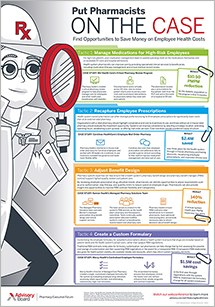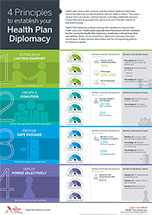Auto logout in seconds.
Continue LogoutContracts between insurers and health systems often contain "secret" clauses that insurers say can block patients' access to lower-cost, high-quality health care providers, Anna Wilde Mathews reports for the Wall Street Journal.
Sept. 25 webconference: Understand Medicaid managed care
The Journal conducted dozens of interviews with industry experts, including current and former health insurance executives, hospital officials, employer executives, and researchers, to learn more about the little-known clauses.
About restrictions in hospital-insurer contracts
According to Wilde Mathews, contracts between hospitals and insurers often include language that aims to better position hospitals against rivals. Such language could include a requirement for the insurer to include a hospital—or an entire system—in all of its plans or to discourage the use of lower-cost rivals.
For example, a so-called "anti-steering" clause in a hospital-insurer contract can prevent an insurer from directing patients toward higher-quality or lower-cost providers, Wilde Mathews reports.
In addition, some contracts contain clauses that allow hospitals to add extra fees, limit audits of claims, and prohibit insurers from including price information on online shopping tools for consumers.
Chet Burrell, former chief executive of CareFirst BlueCross BlueShield, which provides health coverage in Maryland and Washington D.C., said some contracts include provisions that insurers "must always include" the hospital system even "[i]f their costs are 50% higher for the same service" as a less-expensive provider. Burrell said, "That cost is directly built into premiums. … [I]n the end, the buyer of the service pays that."
Do restrictive contract terms raise prices for patients?
The Journal identified dozens of contracts that included restrictive terms limiting insurers' ability to design low-cost health plans for major employers, such as Walmart and Home Depot.
For instance, Cigna and Northwell Health, a New York-based hospital system, had talked about developing a health plan that would offer enrollees lower-cost health coverage by excluding certain health providers, according to people familiar with the matter. However, Cigna ultimately could not design the health plans because it had contracts with other providers that barred the insurer from excluding them from plans.
Patrick Conway, the chief executive of Blue Cross and Blue Shield of North Carolina, said insurers under certain restrictive contracts "literally have to have [hospital systems] in network." Conway said that means "[i]f you're the single hospital system in an area, you essentially can set your price, because you're a monopoly." He added that hospital systems can exert similar market power in regions where there are several health systems. If the system is "the dominant player in part of the geography," it "can charge higher rates."
According to Wilde Mathews, insurance officials said health plans that must include high-cost hospital systems can cost consumers and employers 10% more than health plans that exclude costlier providers. Further, insurance industry officials said a health plan that includes all providers but encourages patient to use lower-cost services can save 3% to 7% more.
Hospital systems push back
Hospital and health system officials, however, argued that the controversial contract clauses are intended to preserve patient choice, Wilde Mathews reports. Hospital officials said patients should be able to decide who their providers are without facing pressure related to finances from their employers or insurers.
Matt Gove, chief consumer officer at Piedmont Healthcare, a hospital system in Atlanta, said, "Allowing the patient to make the best decisions for them and their family and their health is the central goal."
Carrie Nelson, a VP at Aurora Health Care, said the hospital approaches "all of [its] contracts through the same lens that guides all of [its] clinical and operational decisions: what will ensure the highest quality of care at the lowest cost for our patients" (Wilde Mathews, Wall Street Journal, 9/18).
Join our most popular webconference series: Health Insurance 101
Confused about the U.S. health insurance system? Our four-part webconference series will help you get up to speed. If you missed the first three, don't worry—download the slide decks, then sign up for the rest of the series:
- Slide deck | Health Plans 101
- Slide deck | Commercial Insurance 101
- Slide deck | Medicare Advantage 101
- Tuesday, September 25: Medicaid 101
Don't miss out on the latest Advisory Board insights
Create your free account to access 1 resource, including the latest research and webinars.
Want access without creating an account?
You have 1 free members-only resource remaining this month.
1 free members-only resources remaining
1 free members-only resources remaining
You've reached your limit of free insights
Become a member to access all of Advisory Board's resources, events, and experts
Never miss out on the latest innovative health care content tailored to you.
Benefits include:
You've reached your limit of free insights
Become a member to access all of Advisory Board's resources, events, and experts
Never miss out on the latest innovative health care content tailored to you.
Benefits include:
This content is available through your Curated Research partnership with Advisory Board. Click on ‘view this resource’ to read the full piece
Email ask@advisory.com to learn more
Click on ‘Become a Member’ to learn about the benefits of a Full-Access partnership with Advisory Board
Never miss out on the latest innovative health care content tailored to you.
Benefits Include:
This is for members only. Learn more.
Click on ‘Become a Member’ to learn about the benefits of a Full-Access partnership with Advisory Board
Never miss out on the latest innovative health care content tailored to you.


